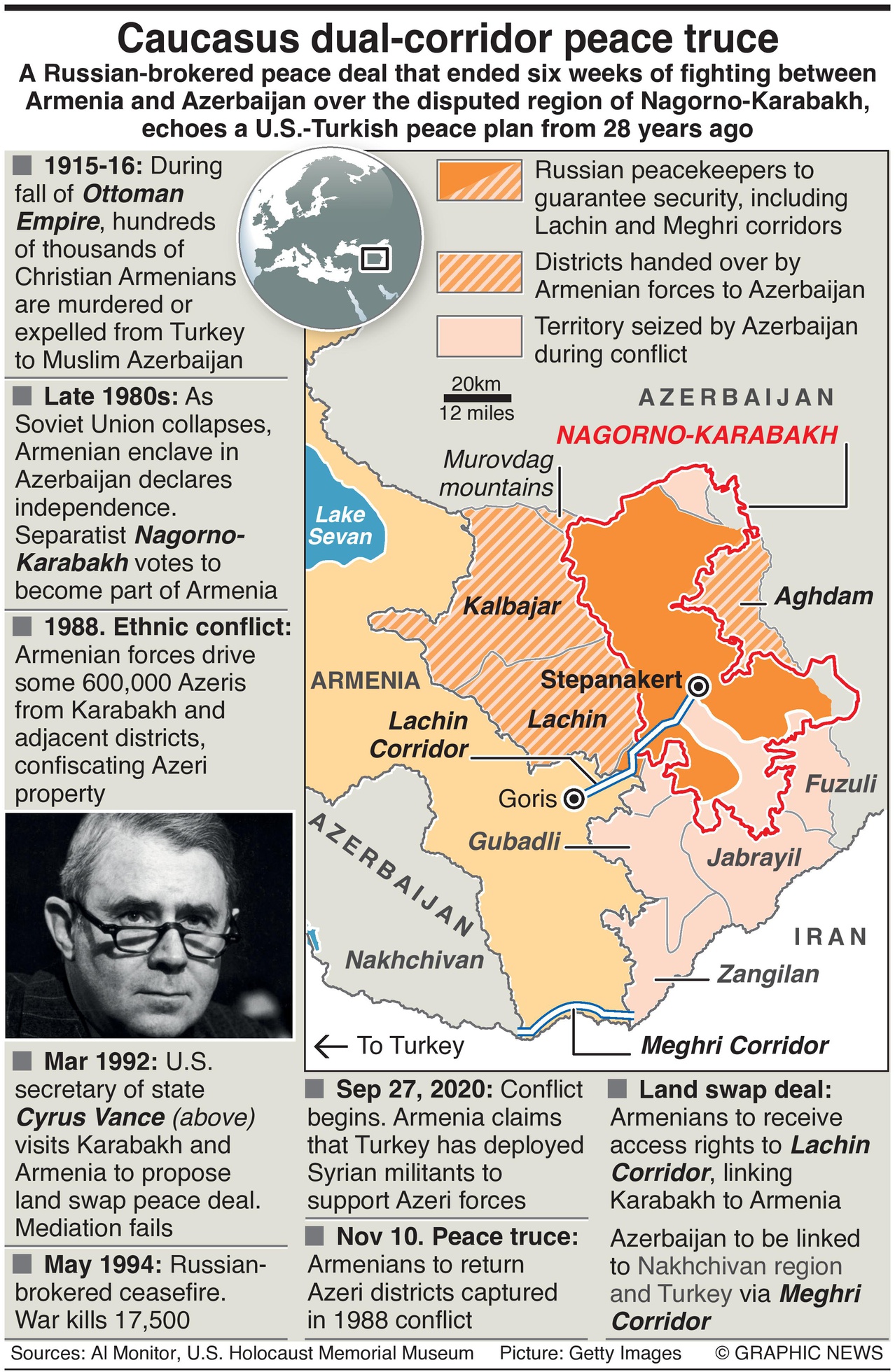Karabakh truce with corridor swaps
BY DUNCAN MIL
December 1, 2020 – A Russian-brokered peace deal that ended six weeks of fighting between Armenia and Azerbaijan over the disputed region of Nagorno-Karabakh, echoes a U.S-Turkish peace plan from 28 years ago.
As the Soviet Union began to collapse in the late 1980s, separatist Nagorno-Karabakh voted to become part of Armenia. After the two republics became independent, ethnic clashes eventually led to full-scale war.
In the early 1990s, Armenian forces gained control of Karabakh. They drove Azeris from the surrounding districts of Lachin, Kalbajar and Aghdam. Tens of thousands died, and the conflict forced some 600,000 Azeris from the region. A Russian-brokered ceasefire signed in 1994 led to two decades of relative stability.
Armenia is majority Christian while Azerbaijan is majority Muslim. Ankara backs ethnic Turkic ally Azerbaijan, while Moscow is allied with Armenia — while keeping good relations with Azerbaijan.
In 1992, Turkish President Turgut Ozal urged his American counterpart George H W Bush to support a “dual corridor” land swap between Armenia and Azerbaijan as a way to resolve the Karabakh conflict.
At the time U.S. secretary of state Cyrus Vance was preparing for a trip to Armenia and Azerbaijan. Vance was given a briefing paper by State Department researcher Paul Goble, proposing the land swap idea. The so-called “Goble Plan” suggested handing most of Nagorno Karabakh and the Lachin area to Armenia. In exchange Azerbaijan would get the Meghri area in south Armenia, connecting directly to the Azeri region of Nakhichevan and, from there, to Turkey.
Now the U.S. State Department sees the Goble Plan as a way to build oil and gas pipelines from Azerbaijan via Armenia through Turkey’s 10-kilometre border with Nakhichevan.
Ordinarily, Armenia would not permit that. But the agreement stipulates that Armenia and Karabakh can freely use the Lachin Corridor only as long as Azerbaijan and Nakhichevan — and thus Turkey — can freely use the Meghri Corridor. In that case, Armenia is committed to having its southern region used as a Pan-Turkish superhighway — a brilliant arrangement from the Turkish standpoint.




 Arabic
Arabic Chinese (Simplified)
Chinese (Simplified) Dutch
Dutch English
English French
French German
German Italian
Italian Portuguese
Portuguese Spanish
Spanish